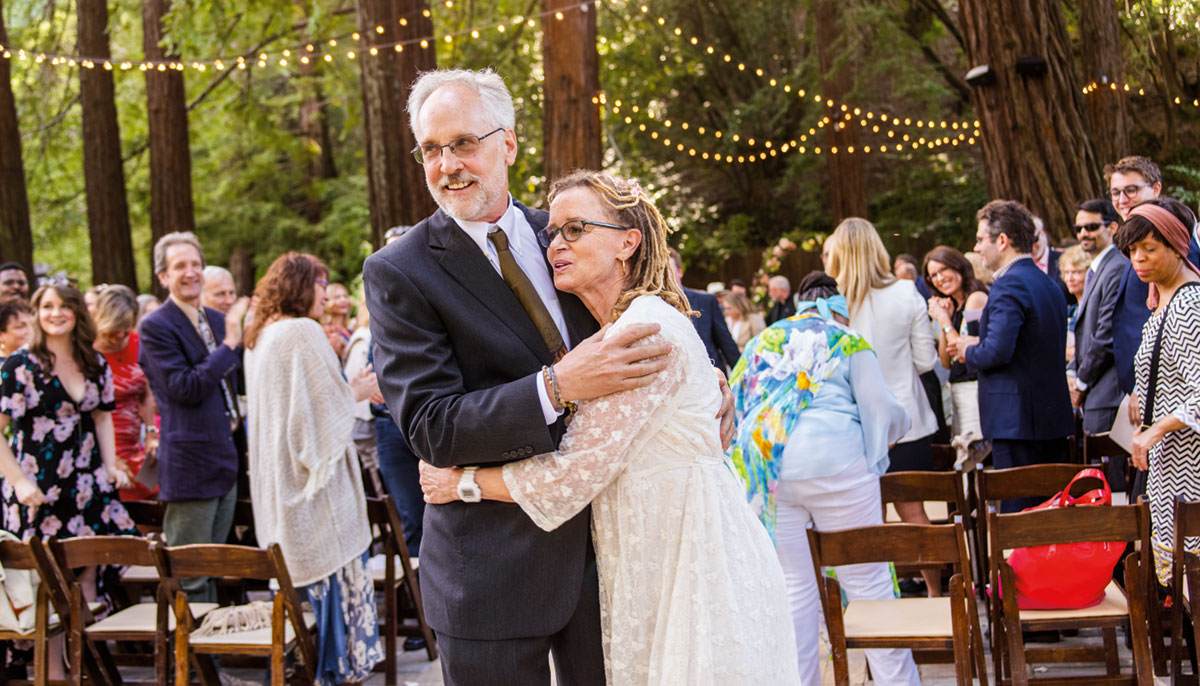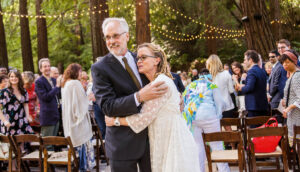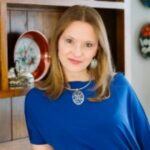When the celebrated Christian writer Anne Lamott and her partner, Neal Allen, bought a house together in Fairfax, California, he filled all the alcoves, corners, and mantles with Buddhist and Hindu statues. Then, though it wasn’t exactly competitive, she went around and put an image of Jesus or Mary next to each of them.
Now, during a conversation with Lion’s Roar, Neal teases her. “You missed a couple of spots, but I don’t want to say where.”
“I’ll find them,” she teases right back.
Theirs is an interfaith marriage, but the truth is neither spouse stays in their religious lane. Neal brought some Mary imagery of his own into the relationship, while Anne brought buddhas. Plus, they’re both game for some Hindu kirtan singing.
Yet there are religious differences between them. Anne says her path is about “me and Jesus, like Casper the Friendly Ghost, whereas Neal is very intellectual and knows about every possible religion.”
“We have our own profound commitment to our own spirituality, but it’s like a Venn diagram,” says Anne. In the center, “everything is the same, just with different vocabularies and focuses. We’re both immersed in what we’d call the holy moment or the now or the immediacy of being in beauty. I experience it through Jesus and Mary. Neal experiences it in more esoteric ways.”
Sometimes, Neal says, “We get into a disagreement over one of the Beatitudes.”
“He always has to be right,” Anne says. “And I always believe he’s right anyway. So then I’ll think this marriage is a sham and feel upset that we’re not Catholic and can’t get an annulment.”
“And then I’ll feel totally misunderstood,” says Neal.
“And then,” Anne concludes, “the cat will do something funny. And we’ll forget about it.”
Anne Lamott, who has penned such bestsellers as Traveling Mercies and Grace (Eventually), was born to staunchly atheist parents. “We were raised with a disdain for spirituality, except for the Beats, whom my father loved.”
In her family, Anne explains, “You could kind of be a Buddhist and get away with it.” Christianity, however, was a hard no-go. This meant the young Anne felt compelled to hide her spiritual leanings, as they had a distinctly Christian flavor.
“The simplest way I can put it,” she says, “is that if I prayed, something heard me.”
In college, she learned from Kierkegaard’s Fear and Trembling that it’s necessary to make a leap of faith, not knowing what’s on the other side, because if we don’t, we’re condemned to a spiritless, materialistic world. Deeply moved, Anne leapt.
t first, that simply meant reading Ram Dass. Then, at age thirty-one, while struggling with alcoholism, she says she “accidentally—in air quotes—wandered into this little Christian church. It was mostly African American, very spirit-filled, loving, and generous. I ended up staying.”
Asked whether she believes the Bible is literally true, Anne doesn’t miss a beat: “No, that would be delusional,” she asserts. “My relationship to the Bible is that I think it’s an amazing book of stories, recipes, and instructions. I love a lot of the stories, but I don’t believe the Bible is the Word of God. I believe it’s the word of humans trying to make sense of the mysteries of life and death.”
At her church, says Anne, “We keep it real simple, like, what is God’s will for us? God’s will is always love and helping the poor and homeless. It’s a church that is very liberal in its interpretation of Christian theology.
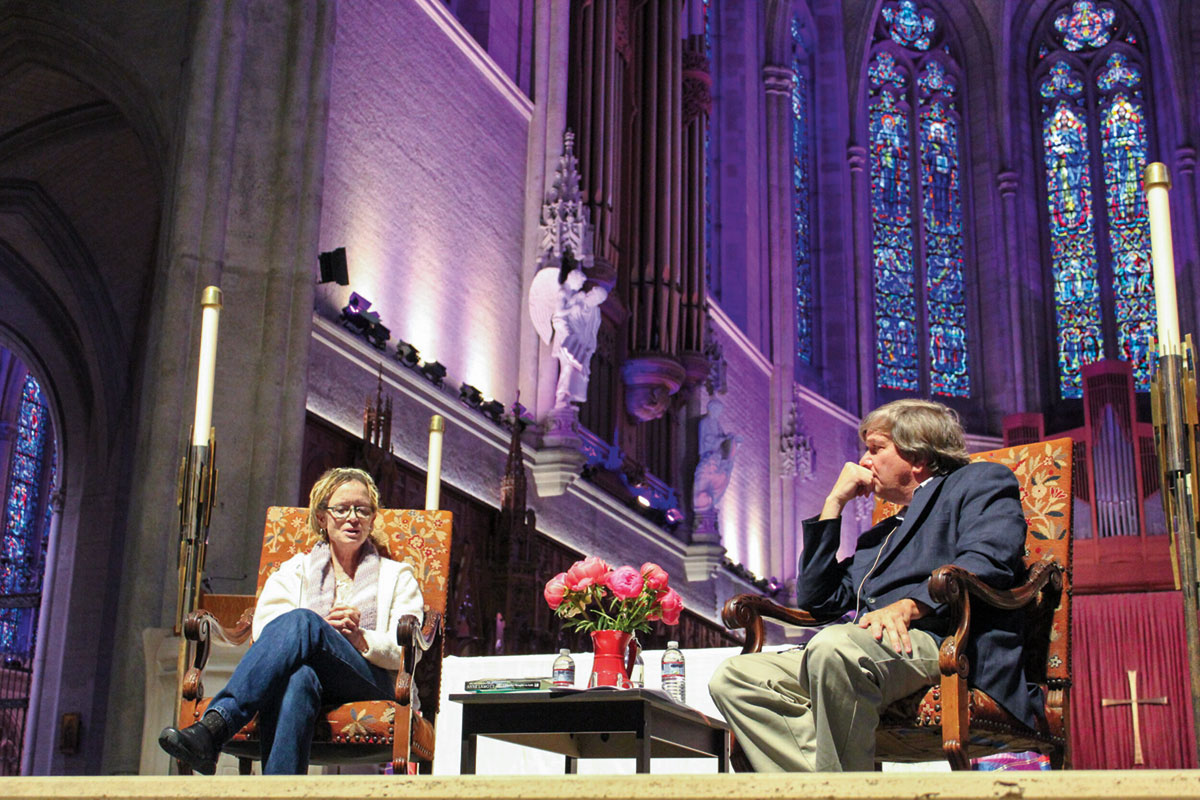
“It’s mortifying to be a Christian in this era,” Anne continues. “If people say they’re Christian, I assume they’re anti women, anti LGBT, anti everything I’m passionate about as a political activist. I’m a follower of Christ, and my whole life is centered around that, but I don’t have an interest in theology. I don’t understand Christian doctrine. I’m not particularly interested in it. I just have a one-to-one relationship with Jesus and am passionate about my church and my Sunday school kids.”
A year after Anne started going to church, she quit drinking. But as she sees it, the church didn’t do it for her.
“Church kept me alive until I could get sober,” she explains. It provided “a place to go on Sundays and a belief that I was loved and safe. But I had no intention of getting sober until I hit bottom. Not one person or organization has got another person sober in the history of humankind. It took the catastrophe of my drinking and using to get my attention.”
At age thirty-five, Anne faced another challenge, which she described in her book Operating Instructions: “I woke up with a start at four o’clock one morning and realized that I was very, very pregnant. … The guy is no longer around, and my stomach is noticeably bigger every few days.”
As a single mother, Anne had a full and busy life. She was still very much involved in recovery, she was active in her church, and her career as a writer was taking off. She also had romantic relationships—some were longterm, but none of them led her to the altar.
In 2008, Anne had another shock. Her son Sam, now a nineteen-year-old college student, called in despair. “Mom,” he said, “I’m going to be a father.”
As soon as she hung up, Anne phoned her good friend Jack Kornfield. “I’ll come get you,” he offered. Then, at a neighborhood restaurant, the Buddhist luminary bought the self-described “Jesusy” writer six cupcakes so she could drown her sorrows in frosting. (Just frosting—Anne is not partial to the cake part of cupcakes.)
Anne was worried Sam and his girlfriend were too young for parenthood, but once the news sank in, she was flooded with love for her future grandson. Jax was born in July 2009, and when Anne held him, she felt like they were the “ultimate portrait of what heaven will be like.” Sam and his girlfriend and Jax moved in with her. Anne’s quiet home became, in her words, “a compound.” Years passed.
“Suddenly, one day,” says Anne, “all the stuff of real life that I’d been suppressing—the disappointment, the longings, and hurts—bubbled to the surface, and I felt this explosive pain that I’d kept at bay by achieving or dieting or immersing myself in something.”
“I’d been a good girl since I was three, and the pain of that burst out,” she remembers. She got in her car and drove around, shouting and sobbing. Then she phoned her spiritual mentor, whom she likes to calls “Horrible Bonnie.”
“I’m not anyone’s priority,” Anne cried.
“It’s because you’re not your own priority,” Horrible Bonnie told her. “You need to become your own priority. Then let’s see what happens.”
“I was reborn then like a Christian might be reborn by accepting Jesus,” Anne says. “I did this radical workshop of romantic self love—getting myself things and looking in the mirror and saying, ‘Oh, my God, you look beautiful.’ I became my own priority.”
Three months later, Anne met Neal.
Neal Allen was raised in Arlington, Virginia. His parents were active in the civil rights movement, and the family attended a liberal Protestant church that emphasized social action. “In Sunday school,” Neal recalls, “Jesus was somewhere between benign and lovely. There was no hell, no guilt, no shame.”
In tenth grade, Neal got involved with a Christian youth group that was led by an Australian minister who used words like groovy and flower power. One day, they were talking about God, and Neal piped up, “I can understand that God started everything, but I don’t see him participating in our lives.”
“Oh,” said the youth minister. “You’re a deist, not a theist.”
“From there,” Neal says, “it was not very far to ‘I don’t need God.’
“I dabbled with Hinduism and Buddhism in my teens and early twenties—everybody did at the time,” Neal continues. But it didn’t stick. Neal grew up to be hyper rational. Over the years, he became a vice president for marketing, twice married—and divorced—and had four children.
At age fifty-two, Neal stumbled across A New Earth by Eckhart Tolle, and keyed into Buddhism’s first noble truth. “I’d not realized before that I was continually going through a pattern of delight, suffering, delight, suffering—mostly suffering,” says Neal. “I had done therapy and knew of the id, ego, and superego—I knew all the structures. But it had never sunk in that there might be something wrong with this picture.”
A therapist introduced Neal to the Diamond Approach, which was developed by the Kuwaiti American A. H. Almaas. An eclectic spiritual path, it draws on modern psychology, Buddhism, Sufism, Platonism, and the teachings of Gurdjieff. For ten years, Neal immersed himself in the Diamond Approach. Then it was time to move on. “I’m wary of institutions and teachers,” he explains.
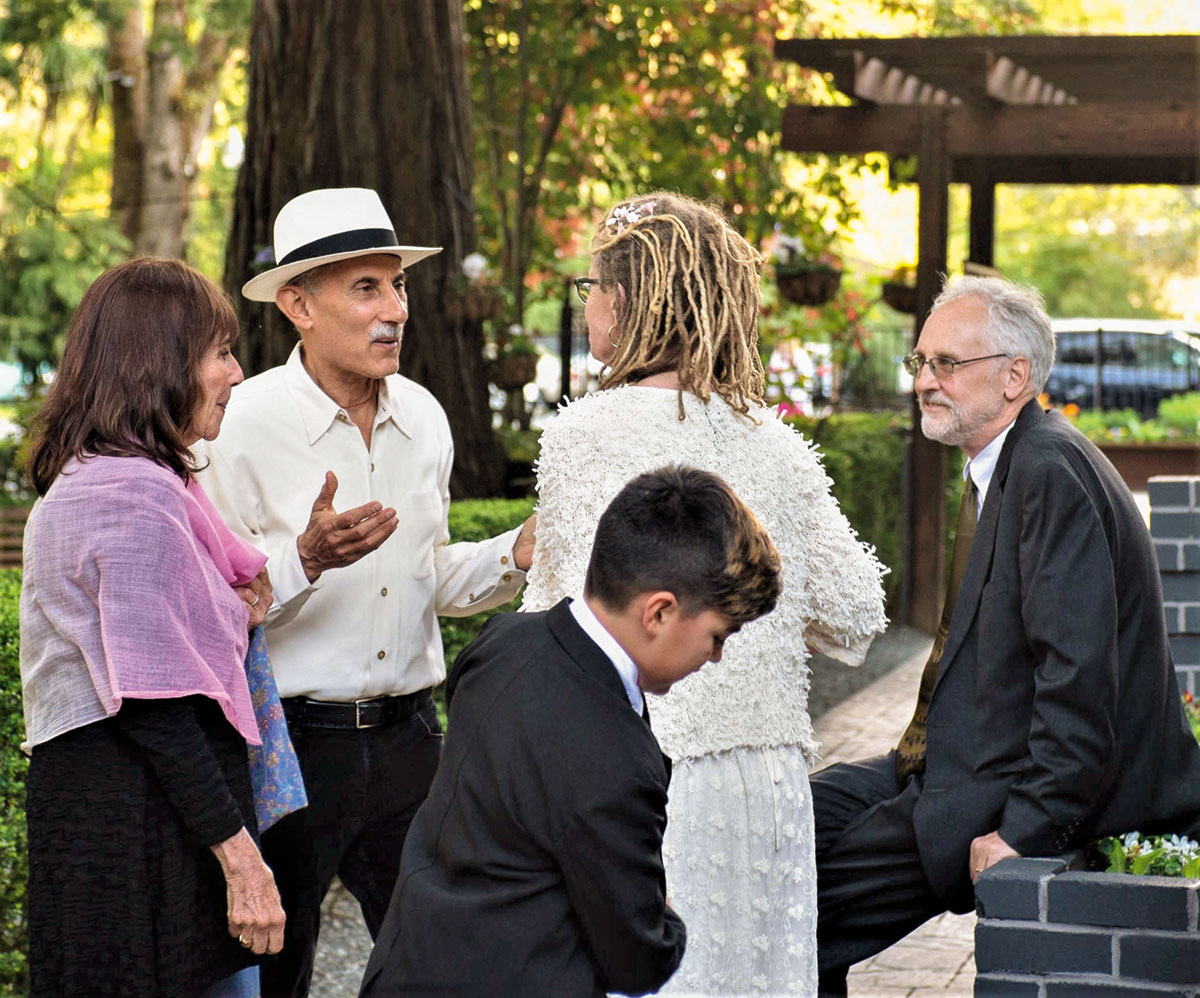
Next, Neal wanted to dive deeper into meditation, and since, as he says, “the meditation people are the Buddhists,” he signed up for a yearlong class at Spirit Rock Meditation Center in Woodacre, California. But there was something besides meditation that drew him to Buddhism: the Buddha himself.
“As avatars, you can’t beat Buddha and Jesus,” he says. “I can never get enough of hearing the Buddha’s story. His way to self-realization was trial and error, and same thing for Jesus. Nobody told the Beatitudes to Jesus. He figured them out. I admire the capacity of any human being to come into wisdom on their own by questioning the assumptions that are around them.”
“Annie’s personal relationship with Jesus is lovely and beautiful—and very hard for me to grok,” Neal admits. But then, he pivots. “Now that I think about it,” he says, “it might not be that hard for me. I might have something like it when I’m thinking about Gautama Buddha. At times, I see through the storyline of his biography and into its beaming essence.”
Anne and Neal met on OurTime, a matchmaking site for people fifty-plus. “I loved his picture because he was attractive, and I’m a superficial person,” Anne says, deadpan. “He was spiritual and smart and local and seemed to have a sense of humor. I thought it would at least be good for a cup of coffee.”
Then they met face-to-face and fell head over heels. They’d both watched the same films and been inspired by the same spiritual books. They had, in Neal’s words, “an immediate appreciation and fascination of the other.”
“Annie was as vulnerable as a person could be, and I appreciate that because then I’m able to be vulnerable,” says Neal. “As we got to know each other over those first couple of weeks, we’d binge-watch TV in the evening, and one of us would hit the pause button and blurt out a shameful fact about herself or myself, then hit start again. We ran through everything that could possibly get in the way of our being vulnerable to each other.”
Our work is of a piece with our spirituality. We’re both in the giving game.
On April 13, 2019, the couple tied the knot in a redwood grove in Fairfax. The ceremony was ecumenical. The officiant was Rev. William Rankin, an Episcopal minister. A Jesuit priest, Rev. Tom Weston, stood with the couple, alongside Buddhist teacher Jack Kornfield. In addition to leading a Buddhist chant, Jack’s contribution was to present Anne and Neal with a gift to help them weather marital bumps—a Tibetan singing bowl to ring whenever they begin to think, “How did I get into this?” At the wedding, says Neal, “Everybody was allowed to express love openly.”
Their honeymoon in Hawaii wasn’t the usual romantic cliché. As Anne puts it, “We didn’t have the running in slow motion down the beach at sunset experience.” Instead, the couple attended the “Spring on Maui Retreat,” where Anne was teaching along with Ram Dass and Buddhist scholar Robert Thurman, and there was always a “mind-blowing” talk they didn’t want to miss.
But in a sense it was a deeply romantic experience. Neal loved seeing Anne’s rapport with the retreat participants. “Watching your partner is as honeymoon-like as your partner holding your hand, walking down the beach,” he says.
And Anne wasn’t the only one who drew people to her. By the end of the retreat, word had gotten out that Neal was working on a book based on A. H. Almaas’ teachings, and people had a lot of questions for him.
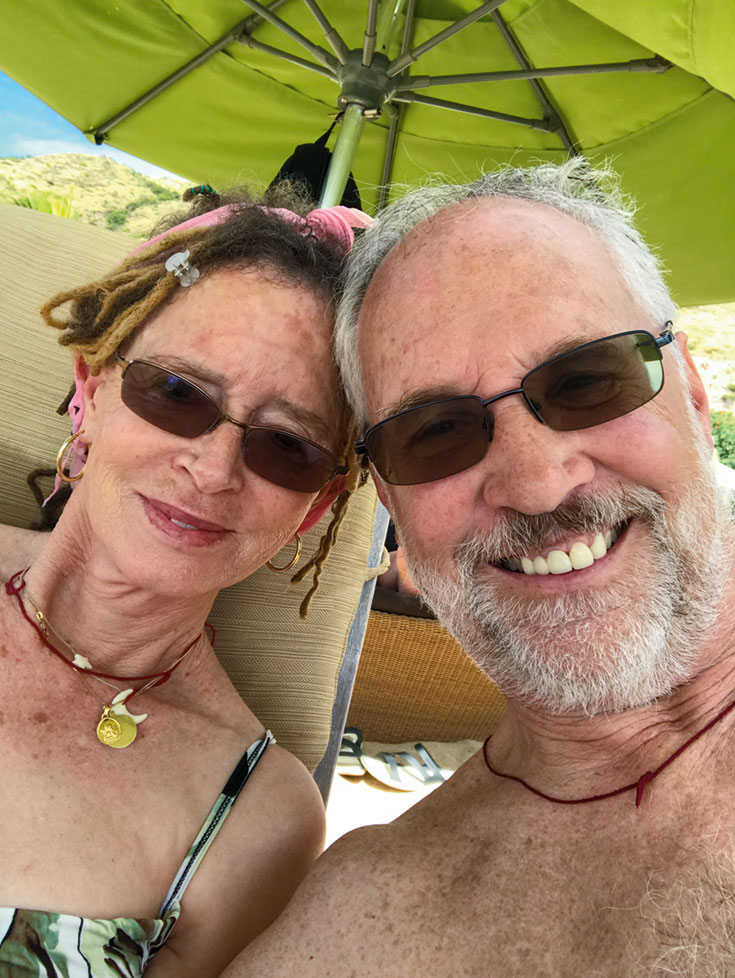
She and Neal “share the same mission statement,” says Anne. “Our calling is centered on giving. We both spend a lot of time next to the beds of people who are dying and we both know that, if you want to fill up, you give of your time and your heart. Our work is of a piece with our spirituality. We’re both in the giving game.”
Now, the couple is settled into the rhythm of married life. Anne goes to church every Sunday, and once a month, Neal joins her. They both go to Spirit Rock to meditate and listen to dharma talks, and they frequently practice together using a guided meditation by Insight teacher Gil Fronsdal. (Anne says Gil’s voice is so beautiful and gentle that he sounds like he could be God’s nephew.)
Neal and Anne also continue to support each other in their work. “I hold the space for her to develop a thought,” he says.
“No, it’s more than that,” she counters. “It’s very collaborative. What always happens—and what we both love so much—is that the conversation takes us another concentric circle out from our human life and our marriage, our house and our stuff. It takes us really out there, into that realm of spirit. We look at each other and go, ‘God!’ And we’ll be so there, in a higher plane, for the rest of the day. It just makes us laugh.”
